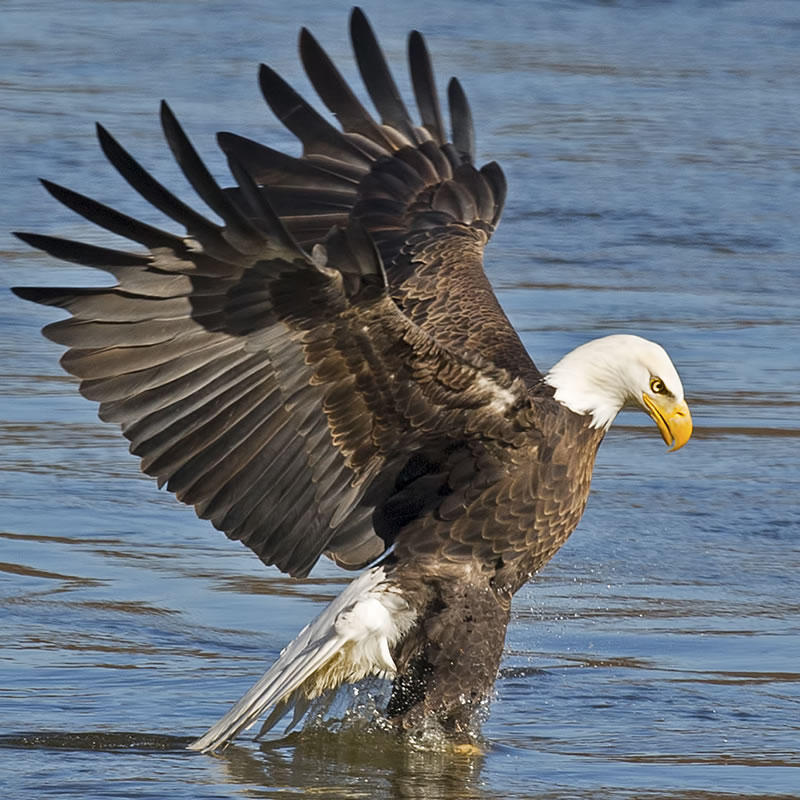
Scientific Name
Haliaeetus leucocephalus
Classification
| Kingdom | Animalia |
| Phylum | Chordata |
| Class | Aves |
| Order | Falconiformes |
| Family | Accipitridae |
| Genus | Haliaeetus |
| Species | leucocephalus |
IUCN Redlist Status

Location
The range of bald eagles is spread throughout North America; from Florida to Eastern Canada on the East Coast; across the continent to northern Mexico and Baja California in the southwest; and then to the Pacific Northwest, Western Canada and Alaska. They will generally not be found in the northernmost parts of Alaska and Canada.
Habitat
They often live near lakes, rivers, streams or oceans where they will be able to find fish, a substantial portion of many bald eagles' diets. They build huge nests in tall trees, which helps them survey the area for prey and offer protection for the nest. These nests can be as large as 6 feet across! If there are no trees in the area, they may even build their nests on the ground. Bald eagles will build their nests out of twigs, mossy material and feathers.
Bald eagles prefer to remain near their nesting area, often for life. Some may migrate to areas where food is more abundant in winter, and then return to their nests the next year.
Diet
In addition to fish, bald eagles also feed on ducks, small mammals such as rabbits, and small reptiles. Another source of food for bald eagles includes carrion (dead animals). They have been seen stealing prey from other birds in mid-air. It is important to note that these eagles are opportunistic predators, so their diet adapts to what is available. A given eagle might eat mostly fish in the summer and relocate in the winter to an area where other food sources are available.
Size
Bald eagles are one of the largest raptors in the United States, second only to the California Condor. They measure from 28 - 40 inches in length, or about 2.5 - 3.5 feet. Their wingspans can reach from 72 - 90 inches, or 6 - 7.5 feet. Females of this species are slightly larger than the males.
Description
These birds are most easily identified by the white feathers on their heads and tails. Their head is sharply contrasted by the dark-brown to black feathers on their body. Bald eagles will not grow white feathers until they are about 4 years of age. Their feet have three long front toes and one hind toe, all equipped with long, sharp talons. This allows a bald eagle to grab and then pierce its prey.
Reproduction
Female bald eagles will usually lay two white eggs. The female and male will incubate the eggs in turns, and the incubation period will last a little over a month. After the eggs hatch, the young chicks will fledge in about 2.5 - 3 months.
Other Facts
The bald eagle is the national bird of the United States. They appear on many U.S. coins and currencies.
They are not the only eagles in the United States and North America. There is also the golden eagle, the national bird of Mexico.
About 40 years ago, bald eagles were critically endangered. Through conservation practices, their numbers have improved so much that they are no longer considered threatened! This is a great victory for the eagles, and for us humans as well!
